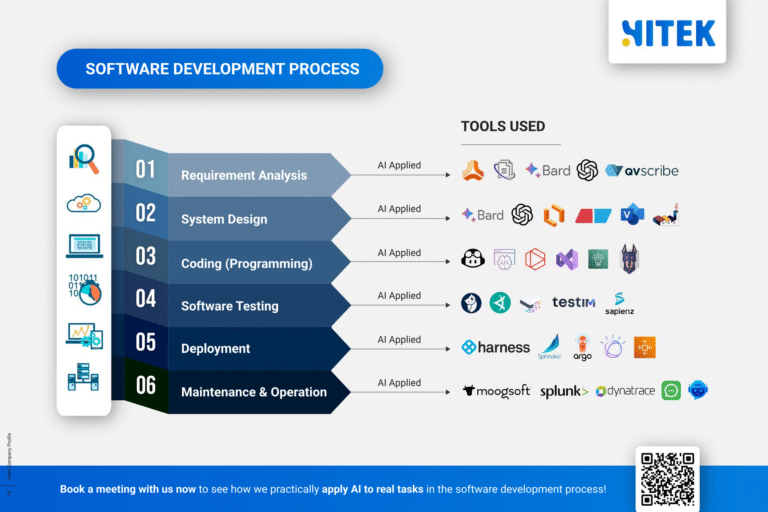Mobile app development has become a cornerstone of modern technology in a world where smartphones are practically extensions of our hands. Whether you’re ordering coffee, tracking your fitness goals, or managing your finances, mobile apps are the invisible engines powering these experiences. But what exactly is mobile app development, and why is it so crucial for businesses and individuals in Australia? Let’s break it down.
Contents
ToggleWhat Is Mobile App Development?
Mobile app development is creating software applications that run on mobile devices like smartphones and tablets. These apps can be pre-installed on devices, downloaded from apps like the Apple App Store or Google Play Store, or accessed through web browsers.
The process involves designing, coding, testing, and launching an app, often tailored to specific platforms like iOS or Android. But it’s not just about writing lines of code—mobile app development is a blend of creativity, technical expertise, and user-centric design.
Why Mobile App Development Matters in Australia
Australia is one of the most digitally connected countries in the world, with over 80% of Australians owning a smartphone. This high penetration rate makes mobile apps a powerful tool for businesses to reach their audience.
From local cafes using apps for loyalty programs to healthcare providers offering telehealth services, mobile apps transform how Australians interact with brands and services. For businesses, investing in mobile app development isn’t just a trend—it’s necessary to stay competitive in a tech-savvy market.
The Mobile App Development Process
Creating a mobile app is a multi-step journey that requires careful planning and execution. Here’s a breakdown of the key stages:
1. Ideation and Research
Every great app starts with an idea. But before diving into development, it’s essential to validate the concept. This involves understanding your target audience, analyzing competitors, and identifying the problem your app will solve.
For example, if you’re developing a fitness app for Australians, you might research local fitness trends and preferences, such as the growing popularity of outdoor activities like hiking and surfing.
2. Design and Prototyping
Once the idea is solidified, the next step is designing the app’s user interface (UI) and user experience (UX). This stage focuses on creating a visually appealing and intuitive design that enhances user engagement.
Tools like Figma and Sketch are commonly used to create wireframes and prototypes, allowing developers to test the app’s flow and functionality before coding begins.
3. Development
This is where the magic happens. Developers write the code that brings the app to life, using programming languages like Swift for iOS and Kotlin for Android. Cross-platform development tools like Flutter and React Native are also popular, enabling developers to simultaneously create apps for both platforms.
4. Testing and Quality Assurance
Before launching, the app undergoes rigorous testing to ensure it’s free of bugs and performs well under various conditions. This includes functional testing, usability testing, and performance testing.
5. Launch and Maintenance
Once the app is ready, it’s published on app stores. But the work doesn’t stop there—regular updates and maintenance are crucial to keep the app running smoothly and address user feedback.
Types of Mobile Apps
Not all apps are created equal. Here’s a quick overview of the different types of mobile apps:
| Type | Description | Examples |
|---|---|---|
| Native Apps | Built specifically for one platform (iOS or Android) using platform-specific tools. | Instagram, Spotify |
| Web Apps | It is accessed through a web browser and doesn’t require installation. | Google Docs, Trello |
| Hybrid Apps | Combine elements of native and web apps, offering cross-platform compatibility. | Uber, Gmail |
Key Trends in Mobile App Development in Australia
The mobile app development landscape is constantly evolving. Here are some trends shaping the industry in Australia:
1. AI and Machine Learning Integration
Artificial intelligence is revolutionizing mobile apps, from personalized recommendations to voice assistants like Siri and Google Assistant. For instance, Australian banks use AI-powered apps to offer personalized financial advice.
2. 5G Technology
With the rollout of 5G networks in Australia, mobile apps are becoming faster and more efficient. This opens up new possibilities for real-time gaming, augmented reality (AR), and video streaming.
3. Sustainability-Focused Apps
As Australians become more environmentally conscious, apps that promote sustainability are gaining traction. Examples include apps for tracking carbon footprints or finding eco-friendly products.
Why Choose Professional Mobile App Development Services?
While DIY app-building tools exist, they often lack the sophistication and scalability of professionally developed apps. Partnering with a reputable mobile app development company ensures your app is built to the highest standards, focusing on security, performance, and user experience.
For businesses in Australia, this investment can yield significant returns, from increased customer engagement to streamlined operations.
Final Thoughts
Mobile app development is more than just a technical process—it’s a gateway to innovation and connection. For Australians, mobile apps have become integral to daily life, offering convenience, entertainment, and solutions to everyday challenges.
Whether you’re a business owner looking to expand your reach or an aspiring developer with a groundbreaking idea, understanding mobile app development is the first step toward creating something genuinely impactful.
Ready to bring your app idea to life? Contact a trusted mobile app development agency in Australia today and take the first step toward building your digital future.
By following this guide, you’ll gain a deeper understanding of mobile app development and discover how it can transform your business or personal projects. The possibilities are endless—so why wait? Start your app journey today!









